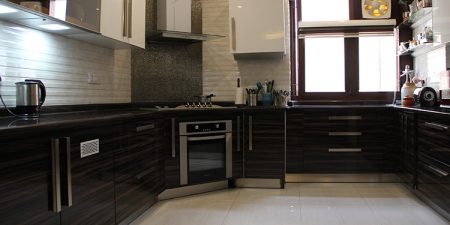Home improvements can be costly. In fact, the typical homeowner spends around $6,000 annually just on repairs and maintenance, according to home insurance company Hippo. That’s not even including any updates or renovations you might want to make.
Fortunately, you may be able to offset those costs — at least a little — by using a home equity line of credit (HELOC) to pay for them.
Are you planning some home improvements this year? Here’s what to know about the HELOC tax deduction and how to take advantage of it.
Is HELOC interest tax deductible?
The interest you pay on a HELOC can be tax-deductible — but not always. It all depends on what you use the funds for.
According to the IRS, you can only deduct the interest you pay on a home equity loan or line of credit if “the borrowed funds are used to buy, build, or substantially improve the taxpayer’s home that secures the loan.”
You may also be able to deduct a portion of any discount points you pay on your HELOC (if any). Again, though, this is only if you use the credit line to buy, build, or substantially improve your home.
What qualifies as a substantial home improvement?
“Buying” and “building” a home are pretty straightforward terms, but what exactly does “substantially improve” your home mean? Luckily, the IRS lays it out pretty clearly.
According to the agency, a home improvement is considered “substantial” — and qualifies you for a write-off — if it:
-
Increases your home’s value
-
Prolongs the lifespan of your home
-
Adapts your home to a new use
Regular maintenance and fixing wear-and-tear issues don’t fall under the “substantial” umbrella, according to the IRS. As the agency explains in its mortgage interest deduction guide, “Repairs that maintain your home in good condition, such as repainting your home, aren’t substantial improvements. However, if you paint your home as part of a renovation that substantially improves your qualified home, you can include the painting costs in the cost of the improvements.”
How to deduct your HELOC interest on your tax return
If you do use your HELOC to buy, build, or substantially improve your house, then you can deduct that interest from your taxable income.
To do this, you’ll need to:
1. Make sure your HELOC qualifies.
You can only write off mortgage interest on debts up to $750,000. So, if your total mortgage debts go beyond this amount, you won’t be able to deduct any interest paid on the overage.
You will also need to be sure your house qualifies. This means it must be your primary residence or second home, and it must be the home that secures the HELOC.
2. Get your documentation together.
Before you can file your returns, you will need a 1099-INT form from your lender.
“Your bank should send you a 1099-INT at the beginning of the year,” says Kari Brummond, a tax preparer for Tax Cure. “This shows how much interest you paid during the previous year.”
You’ll need a total for any HELOC funds used to buy, build, or improve your home, too, so gather any receipts or contracts you have for the work done or materials purchased. Then, total these up. (You don’t need to send these in with your return, but make sure to keep them on hand in case you’re ever audited).
3. Itemize deductions
To take line-item write-offs like mortgage interest, you need to itemize your returns, which requires a Schedule A.
“You will note the 1099-INT amount on your Schedule A along with mortgage interest from your primary or secondary homes, plus any other itemized deductions you claim,” Brummond says. “You don’t have to send the 1099-INT to the IRS, but you should keep it for your records.”
Benefits of using a HELOC to improve your home
Aside from the tax season savings it can come with, there are other reasons a HELOC might be a smart option to explore if you’re looking to update your house right now.
For one, homeowners are sitting on record amounts of equity. Between the fourth quarters of 2021 and 2022, the average owner earned about $14,300 in home equity. In total, the typical homeowner now has an equity stake of around $270,000.
If you need cash, HELOCs can be a good way to make use of this equity and avoid using financial products like credit cards or personal loans, which usually result in more interest costs in the long run.
HELOCs are also a good alternative to cash-out refinancing right now for the same reason. If you’re one of the many homeowners who has a 2% to 4% rate on your main mortgage, refinancing now may not make sense, as it would mean replacing that low rate with a significantly higher one. HELOCs can help you access cash without having to touch the low rate on your original mortgage.
Get help with your HELOC
To learn more about HELOCs and tax deductions, speak to your tax preparer or a certified public accountant. And if you’re not sure a HELOC is the right move or you want to explore other options, like home equity loans, refinancing, or even home equity sharing, talk to a mortgage professional or financial advisor. They can provide guidance that’s personalized to your goals and budget.
HELOC and Home Equity Loan FAQs
What are good home equity loan rates?
The best home equity loan rates can vary by lender. The average national rate for a home equity loan in June 2023 was between 7.52% and 9.81%. To find the most competitive rates, it’s best to do your research and shop around for the right lender for your needs.
What are the best HELOC rates?
As of June 2023, the average national rate for a home equity line of credit (HELOC) is between 7.79% and 9.78%. To get the best HELOC rates you will need to have a good credit score, a low debt-to-income ratio, a high enough income, and a reliable payment history. Even if all of these factors apply to you, it’s important to get quotes from at least a few lenders.
How does a HELOC work?
A HELOC is a revolving line of credit, which makes it similar to using a credit card. HELOCs usually come with a draw period of 10 years, followed by a repayment period. During the draw period, you can access funds as needed and repay only the interest as you go. Each time you make a payment, your credit line will replenish. During the repayment period, you’ll make larger payments that include both principal and interest. HELOCs tend to come with variable interest rates, but some lenders offer fixed payment options. A HELOC is a great option if you’re not sure how much you’ll need to borrow.
What is a fixed-rate HELOC?
A fixed-rate HELOC is considered a hybrid product because it combines a home equity loan’s fixed interest rate with a HELOC’s credit line. You can withdraw money (up to your credit limit) just like you would with a traditional HELOC. But unlike a variable HELOC, you lock in all or a portion of your balance at a fixed interest rate during the draw period. This can make it easier to plan and budget while protecting you from future interest rate hikes.
What is the best HELOC strategy?
Just because you can use a HELOC for anything doesn’t mean you should. After all, your house is on the line, and you risk losing it to foreclosure if you default on the payments. For this reason, the best HELOC strategy is to use the HELOC to boost your home’s value or strengthen your financial situation in some other way.
What is the difference between a home equity loan and a HELOC?
Trying to figure out the pros and cons of a home equity loan vs a heloc can be tricky. Both of these products let you borrow against your home equity — that is, your home’s value, minus what you still owe on the mortgage — giving you cold, hard cash in return. You can then use that money to pay for renovations, cover unexpected bills or expenses, consolidate debt, or manage any other financial need you might have.
A home equity loans let you turn your home equity into a one-time lump sum payment. You then repay the loan via fixed monthly payments over an extended period of time — usually 10 to 30 years. A home equity line of credit is another option for borrowing against your home equity. Unlike home equity loans, these work more like credit cards, allowing you to withdraw money, pay some back, and withdraw more when you need it. Typically, HELOCs come with a 10-year draw period, which is when you can withdraw money from the credit line. During this time, you’ll usually pay only interest on the funds you pull out.
How can I increase my home’s value?
If you’re researching home equity loans and HELOCs, you’ve probably started wondering how you can increase your home’s value. Check out our guide for tips, including investing in smart energy, replacing your roof, and refinishing hardwood floors.
What is a home improvement loan?
A home improvement loan is an unsecured loan that you can use to pay for various home repairs and renovations — such as a roof replacement, furnace/HVAC repairs, kitchen or bathroom remodel, deck addition, solar panel installation or landscaping. Loan amounts range from $3,000 to $100,000, which you repay with interest in monthly installments over one to five years.
How does a home equity loan work?
Once you’re approved for a home equity loan, your lender gives you the funds as an upfront lump sum. This makes home equity loans ideal for homeowners who want to borrow a specific amount for a major project or big one-time expense. To repay the loan, you make fixed monthly payments (with interest, of course) over a set term ranging from five to 30 years.
TIP: Remember that home equity loan payments are in addition to your usual mortgage payments, so budget accordingly. If you default on the loan payments, your lender can foreclose on your home.
How can I get a home equity loan?
While the process varies by lender, this is generally how to get a home equity loan:
-
Calculate how much equity you have in your home.
-
Decide how much you need to borrow.
-
Compare borrowing limits, features, terms, and customer reviews across lenders.
-
Get quotes from a handful of lenders that meet your needs.
-
Choose the lender with the lowest rate offer and submit a formal application, which will require a hard credit check.
-
Schedule an appraisal.
-
Wait for approval and close on your loan.
-
Begin repayment.
Editorial Disclosure: All articles are prepared by editorial staff and contributors. Opinions expressed therein are solely those of the editorial team and have not been reviewed or approved by any advertiser. The information, including rates and fees, presented in this article is accurate as of the date of the publish. Check the lender’s website for the most current information.
This article was originally published on SFGate.com and reviewed by Lauren Williamson, who serves as Financial and Home Services Editor for the Hearst E-Commerce team. Email her at [email protected].
Read the full article here





















